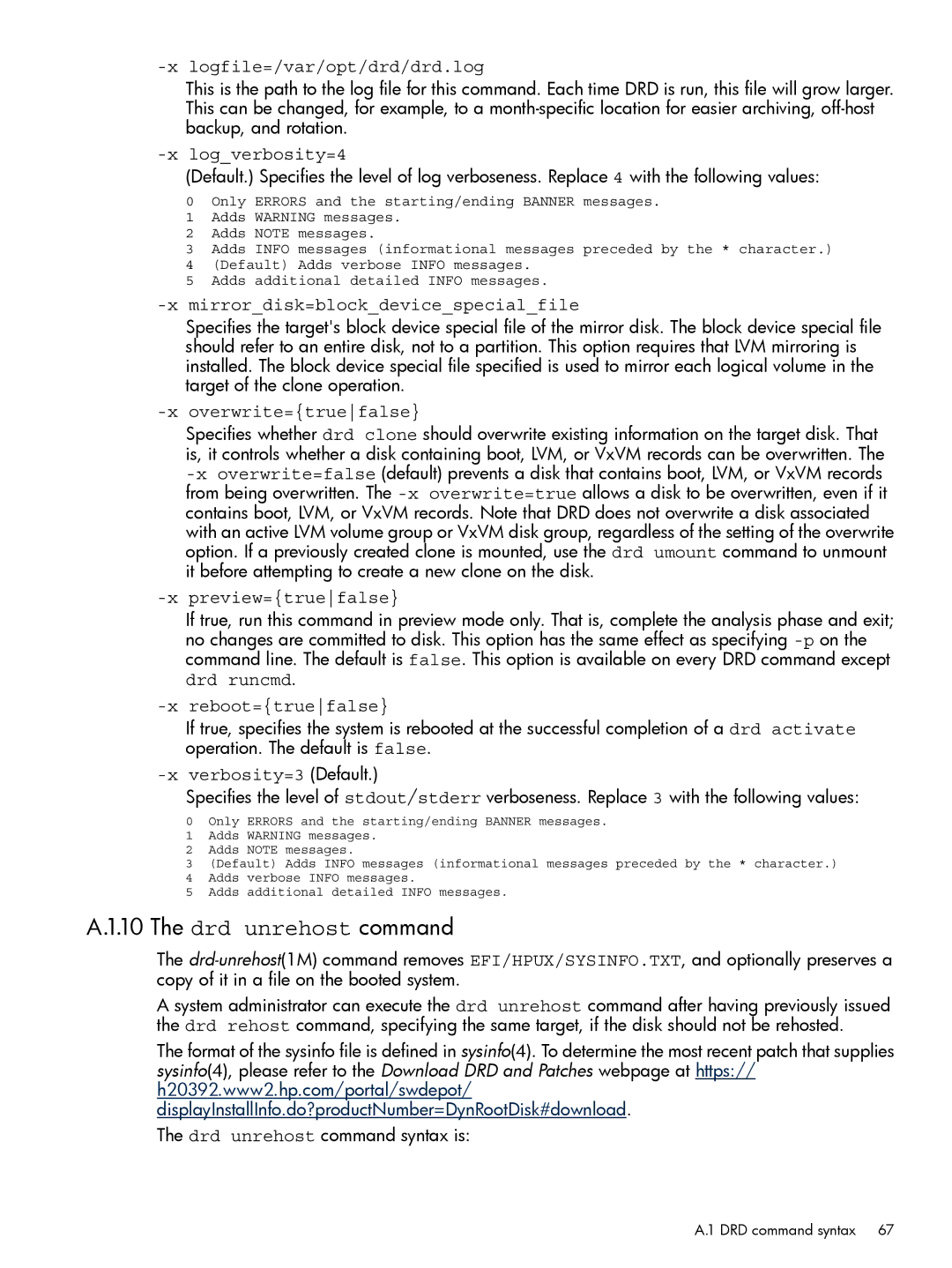-x logfile=/var/opt/drd/drd.log
This is the path to the log file for this command. Each time DRD is run, this file will grow larger. This can be changed, for example, to a
-x log_verbosity=4
(Default.) Specifies the level of log verboseness. Replace 4 with the following values:
0Only ERRORS and the starting/ending BANNER messages.
1Adds WARNING messages.
2Adds NOTE messages.
3Adds INFO messages (informational messages preceded by the * character.)
4(Default) Adds verbose INFO messages.
5Adds additional detailed INFO messages.
-x mirror_disk=block_device_special_file
Specifies the target's block device special file of the mirror disk. The block device special file should refer to an entire disk, not to a partition. This option requires that LVM mirroring is installed. The block device special file specified is used to mirror each logical volume in the target of the clone operation.
-x overwrite={truefalse}
Specifies whether drd clone should overwrite existing information on the target disk. That is, it controls whether a disk containing boot, LVM, or VxVM records can be overwritten. The
-x preview={truefalse}
If true, run this command in preview mode only. That is, complete the analysis phase and exit; no changes are committed to disk. This option has the same effect as specifying
-x reboot={truefalse}
If true, specifies the system is rebooted at the successful completion of a drd activate operation. The default is false.
-x verbosity=3 (Default.)
Specifies the level of stdout/stderr verboseness. Replace 3 with the following values:
0Only ERRORS and the starting/ending BANNER messages.
1Adds WARNING messages.
2Adds NOTE messages.
3(Default) Adds INFO messages (informational messages preceded by the * character.)
4Adds verbose INFO messages.
5Adds additional detailed INFO messages.
A.1.10 The drd unrehost command
The
A system administrator can execute the drd unrehost command after having previously issued the drd rehost command, specifying the same target, if the disk should not be rehosted.
The format of the sysinfo file is defined in sysinfo(4). To determine the most recent patch that supplies sysinfo(4), please refer to the Download DRD and Patches webpage at https:// h20392.www2.hp.com/portal/swdepot/ displayInstallInfo.do?productNumber=DynRootDisk#download.
The drd unrehost command syntax is:
A.1 DRD command syntax 67
